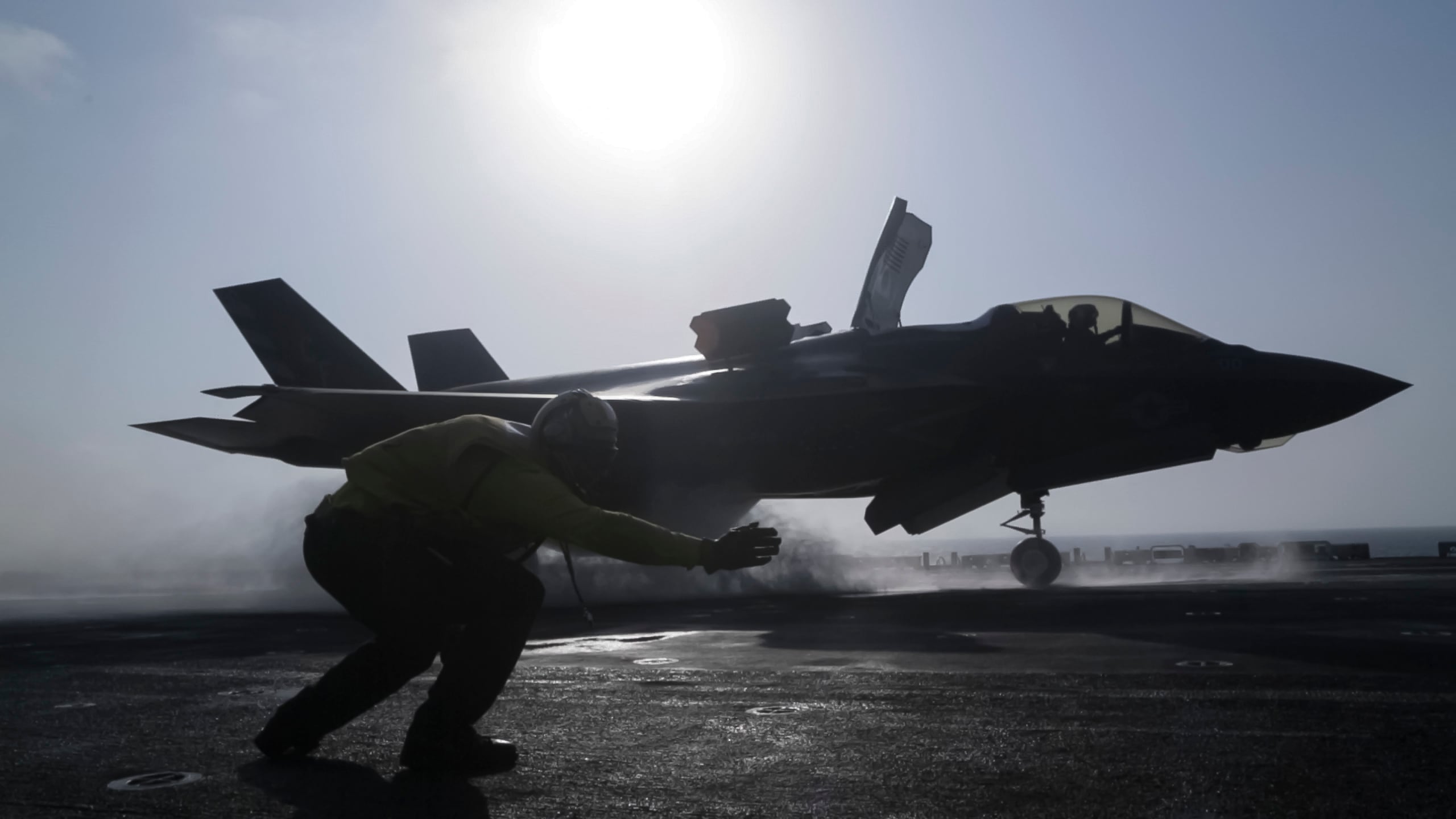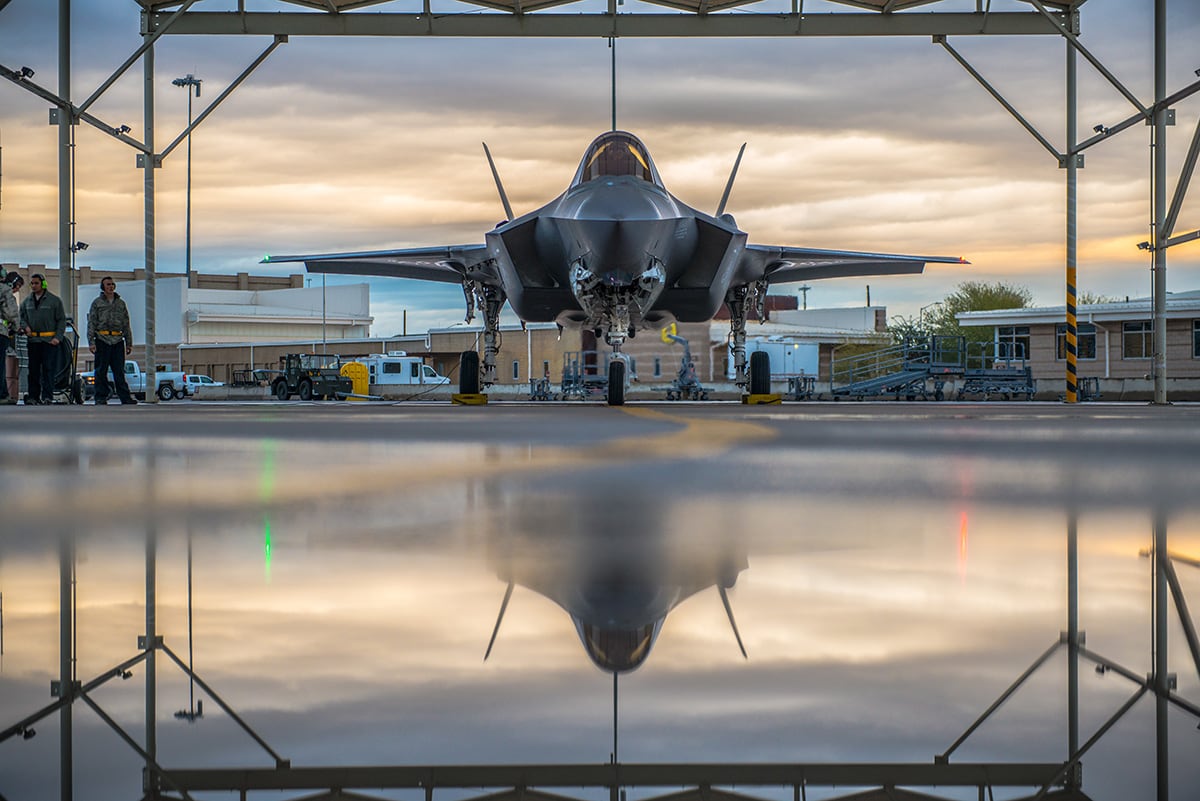WASHINGTON — U.S. Air Force officials on Thursday defended their reversal to pursue Boeing’s F-15X, a fourth-generation fighter jet, saying it will not derail plans to buy Lockheed Martin’s F-35, a fifth-generation fighter jet.
At a Senate Armed Services Committee on the Air Force’s fiscal 2020 budget request, the service’s top official said the decision to seek eight F-15X aircraft is a short-term patch, as 800 fewer F-35s are operational than planned. They pitched the move as the most cost-effective way to replace the retiring F-15C Eagle, using the same hangers, equipment and maintainers.
“We absolutely [are] adamant that the F-35 program, the program of record, absolutely stays on track and we don’t take a dime out of the F-35,” said Air Force Chief of Staff Gen. David Goldfein, calling the jet the “quarterback of the joint penetrating team.”
Goldfein also reassured lawmakers who recalled the cancellation of Lockheed’s fifth-generation F-22 Raptor that there would be no repeat. The plan is still for its fleet to be made up of 80% fifth-generation aircraft by the 2040s, he said.
RELATED

Both the panel’s chairman, Sen. Jim Inhofe, R-Okla., and ranking member, Sen. Jack Reed, D-R.I., questioned the decision, after years of strongly declining to request F-15 or F-16 funding, to ask for $1.1 billion for the F-15X in 2020. The budget includes 48 F-35s in 2020 and $7.9 billion for 80 F-15s over five years.
“It seems to me that we’re getting back into the fourth generation that we’re hoping to be out of,” Inhofe said. “Sometimes we forget what happened to our F-22s. Started out that was going to be 750, ended up being 187, and we paid dearly for that ever since then. That was a huge mistake, should not have happened.”
After the hearing, Inhofe told reporters that Air Force officials were defending an approach they did not agree with. “They didn’t like it any better than I like it. You don’t expand your force by going from a fifth generation to the fourth generation, which is essentially what your doing,” Inhofe said.
RELATED

During the hearing, Reed likened the service’s reversal to other “abrupt Air Force changes of direction” on the A-10, Compass Call, U2 and Global Hawk, and asked of the F-15X: “It it a wise acquisition?”
To manage its aging fleet and fulfill its missions, the Air Force would need to buy 72 aircraft a year, Goldfein told lawmakers. Three of its four fourth-generation aircraft will last into the 2030s, but not the F-15C.
An F-15 variant was the most cost-effective means of maintaining fourth-generation jet capability, already bolstered by recent Saudi and Qatari purchases of the platform.
Amid questions from another skeptic, Sen. Tammy Duckworth, D-Ill., Goldfein said the F-15X would have a 20,000-hour service-life expectancy — but he was adamant that would not impact the F-35.
“Ma’am, if we ever get to a point where we are trading F-15s for F-35s, that is a bad choice,” he said. “The F-15 is not an F-35, it will never be an F-35.”
Outside of the hearing, Duckworth told reporters she fears that F-15s will be too tempting an alternative to the F-35 if defense budgets fall in the future — especially as the Air Force seeks development funding for sixth-generation aircraft.
“I am concerned this decision is based on the funding levels of the last two years,” she said, “and not a realistic view of where we will be in the next several years.”
Joe Gould was the senior Pentagon reporter for Defense News, covering the intersection of national security policy, politics and the defense industry. He had previously served as Congress reporter.




